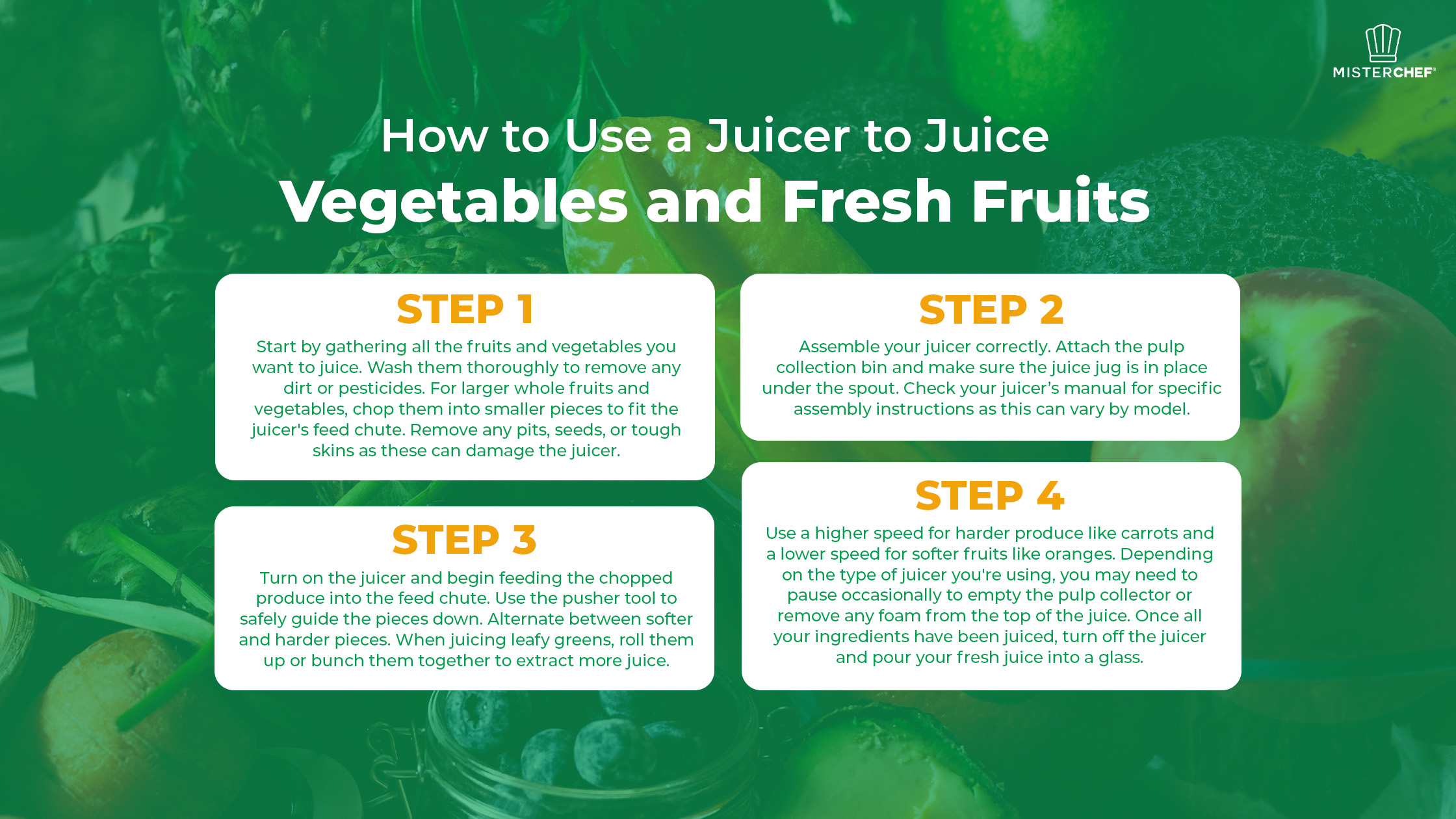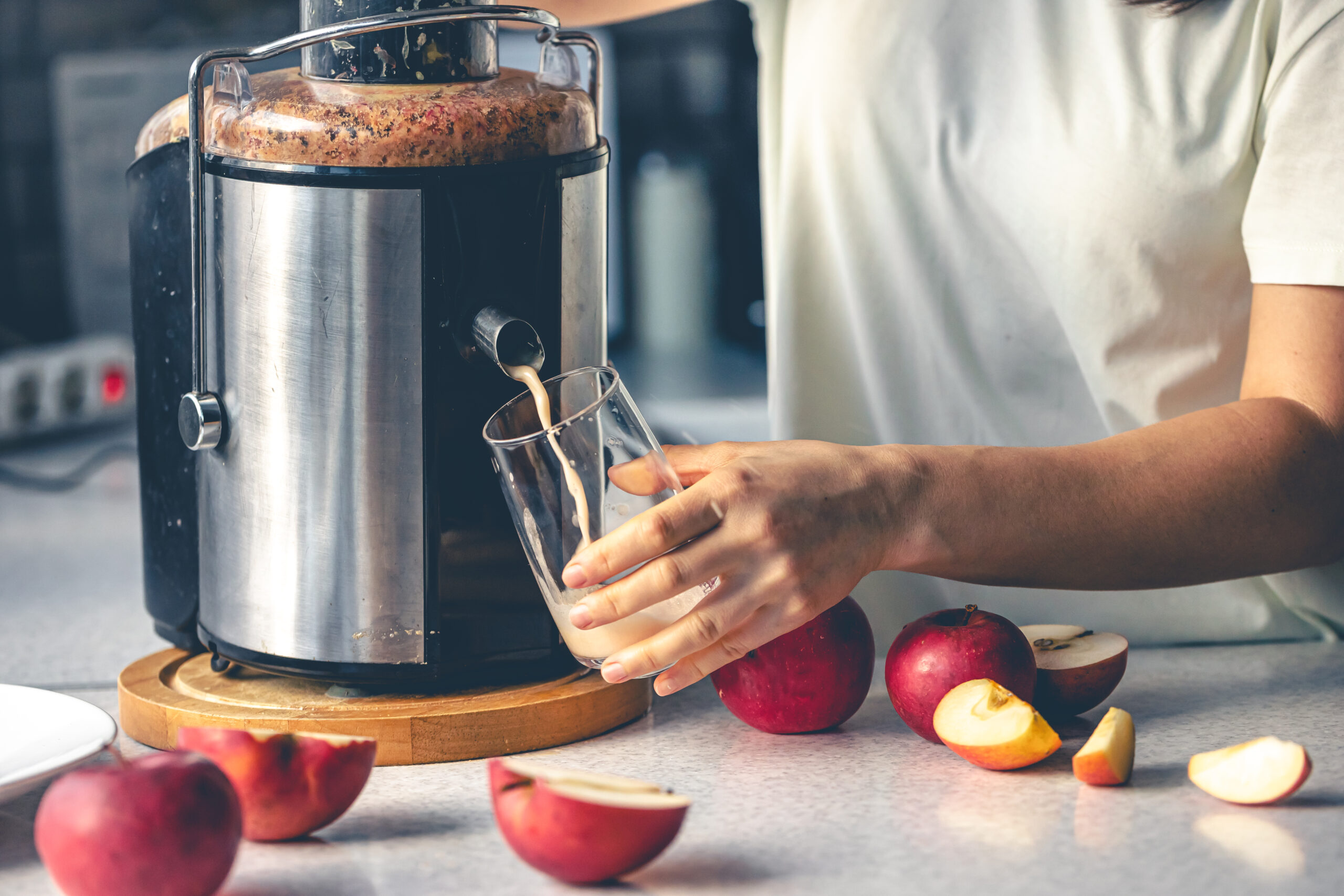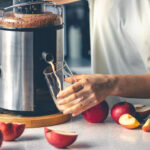If you’re trying to get healthy, green juices and fresh fruit juices are a great way to get your daily intake of vitamins and minerals, or simply because you want to swap your coffee for a healthier option. A juicer is a great tool to make your juices unless you plan to squeeze everything by hand which is something we definitely do not recommend. In this guide, we’ll guide you on how to use a juicer the right way and also explore some great recipes you can try out for a juice cleanse.
What Are the Different Types of Juicers?
There are three main types: centrifugal, masticating, and triturating juicers:
Centrifugal Juicer
Centrifugal juicers are the most common and usually the most affordable. They work by using a fast-spinning metal blade that spins against a mesh filter, separating juice from flesh via centrifugal force. This type heats up slightly during use, which can sometimes reduce the nutritional content of your juice.
Masticating or Cold Press Juicer
This is also known as a cold-press or slow juicer. They operate at a slower speed using an auger to crush fruit and vegetables against a screen. This slow speed generates less heat, which means more nutrients and enzymes are preserved in your juice. They are typically more expensive than centrifugal juicers but are better at extracting more juice from leafy greens and wheatgrass.
Triturating Juicer
Triturating juicers, or twin-gear juicers, have two interlocking gears that crush and press produce. They operate at even slower speeds than masticating juicers, providing the highest yield and nutrient retention. These are excellent for serious juicers who want the most efficient extraction and the healthiest juice possible, but they come at a higher price point and require more cleaning effort.
How to Use a Juicer to Juice Vegetables and Fresh Fruits

Here’s how to use a juicer to extract juice:
- Start by gathering all the fruits and vegetables you want to juice. Wash them thoroughly to remove any dirt or pesticides. For larger whole fruits and vegetables, chop them into smaller pieces to fit the juicer’s feed chute. Remove any pits, seeds, or tough skins as these can damage the juicer.
- Assemble your juicer correctly. Attach the pulp collection bin and make sure the juice jug is in place under the spout. Check your juicer’s manual for specific assembly instructions as this can vary by model.
- Turn on the juicer and begin feeding the chopped produce into the feed chute. Use the pusher tool to safely guide the pieces down. Alternate between softer and harder pieces. When juicing leafy greens, roll them up or bunch them together to extract more juice.
- Some juicers come with speed adjustments. Use a higher speed for harder produce like carrots and a lower speed for softer fruits like oranges. Depending on the type of juicer you’re using, you may need to pause occasionally to empty the pulp collector or remove any foam from the top of the juice. Once all your ingredients have been juiced, turn off the juicer and pour your fresh juice into a glass.
How to Clean Up a Juicer
Start by unplugging the juicer and disassembling all the removable parts. Rinse them under warm water to remove any leftover pulp or residue. Use a brush or sponge to scrub any stubborn bits (take care not to damage the juicer’s delicate parts). Once everything is clean, dry the parts thoroughly before reassembling your juicer. Clean your juicer immediately after each use to prevent any buildup of mold or bacteria.
Simple Juicer Recipes
Here are a few simple juicer recipes that you can try at home:
1) Classic Green Apple Juice
Ingredients: 2 green apples, 3 stalks of celery, a handful of kale, 1 cucumber, half a lemon (peeled), and a piece of ginger about 1-inch thick.
Instructions: Start by washing all the produce thoroughly. Chop the apples, celery, cucumber, and ginger into sizes that will fit your juicer’s feed chute. Juice the ingredients one by one, starting with the softer items like apples and finishing with the harder items like ginger and kale. Stir the juice before drinking.
2) Beetroot Vegetable Juice
Ingredients: 1 medium beetroot, 2 carrots, 1 red apple, and half a lemon (peeled).
Instructions: Clean all ingredients and peel the beetroot and carrots if they are not organic. Chop into pieces that will fit into your juicer. Juice the ingredients, starting with the beetroot, followed by the apple, carrots, and lemon. This recipe is particularly good for your liver and blood pressure.
3) Tropical Mint Healthy Juice
Ingredients: 2 cups of pineapple, 1 mango, a handful of mint leaves.
Instructions: Peel the pineapple and mango, removing any hard pits from the mango. Wash the mint leaves. Chop the fruits into chunks, then alternate juicing the pineapple, mango, and mint. The mint will refresh and balance the sweetness of the tropical fruits.
4) Carrot Ginger Juice
Ingredients: 4 large carrots, 1-inch piece of ginger, half a lemon (peeled).
Instructions: Wash and peel the carrots and ginger. Chop into citrus juicer-friendly sizes. Juice the carrots first, then the ginger, and finish with the lemon. This juice is great for boosting your immune system and digestion.
5) Cucumber Juice
Ingredients: 2 cucumbers, a handful of spinach, 1 green apple, a quarter of a lime (peeled).
Instructions: Thoroughly wash all produce. Chop the cucumbers and apple into pieces. Juice all the ingredients together, starting with the cucumbers and spinach, followed by the apple and lime. This drink is excellent for hydration and cooling down on a hot day.
6) Citrus Juice
Ingredients: 2 oranges, 1 grapefruit, 1 lemon, and 1 lime.
Instructions: Start by washing all the citrus fruits thoroughly. Peel the oranges, grapefruit, lemon, and lime, as juicing the peels can make the juice too bitter. Once peeled, cut them into sizes that will fit your juicer’s feed chute. Juice all the fruits, one at a time, in any order. Stir the combined juice well to blend the flavors together.
FAQs
How long can I store fresh juice?
For up to 24 hours. Keep in mind that juice may lose some of its nutrients and flavor the longer it sits.
Can I juice citrus fruits with the peel on?
No, the peel may impart a bitter taste to your juice. It’s best to remove the peel from citrus fruits like oranges, lemons, and limes before juicing them.
What should I do with the leftover pulp?
You can add it to smoothies, soups, or baked goods for added fiber. Some people also compost the pulp to reduce food waste.
Summary
Using a juicer can be a simple and rewarding way to incorporate more fruits and vegetables into your diet. By following these guidelines for choosing the right juicer, preparing your ingredients, and mastering the juicing process, you’ll be well on your way to enjoying tasty juices.
Looking to improve your daily nutrition? Check out MisterChef’s Juice Press. Simply choose your ingredients, press, and enjoy fresh, delicious juices packed with vitamins and flavor. Shop with us today.







